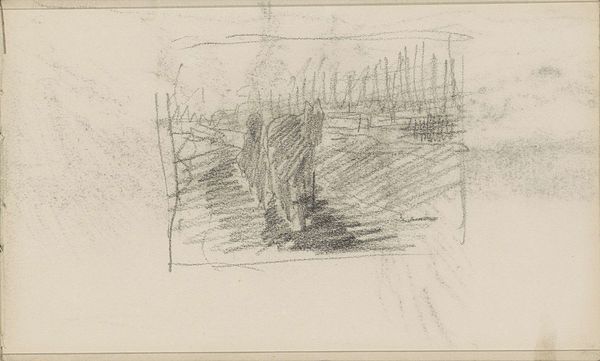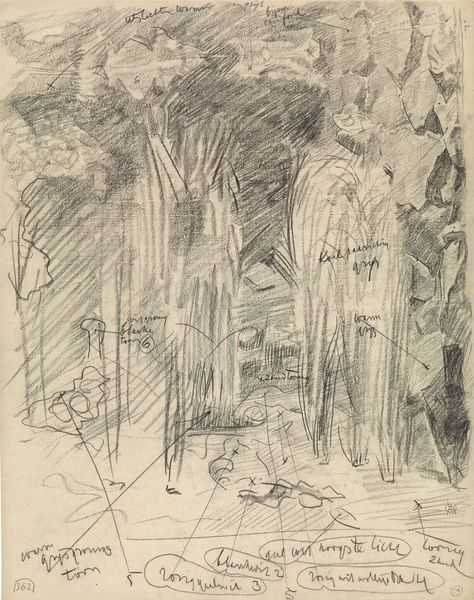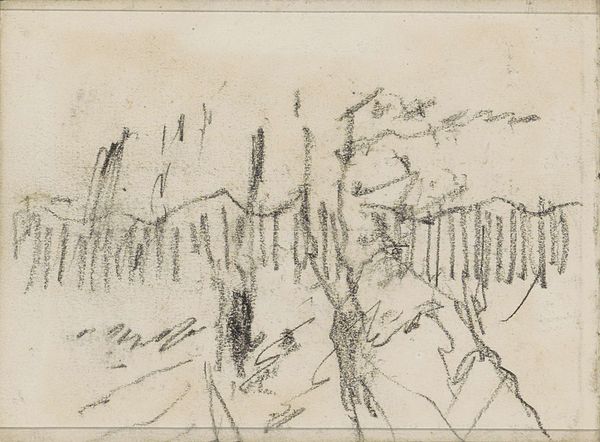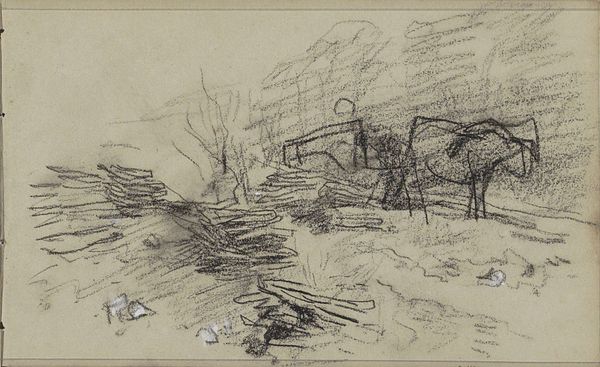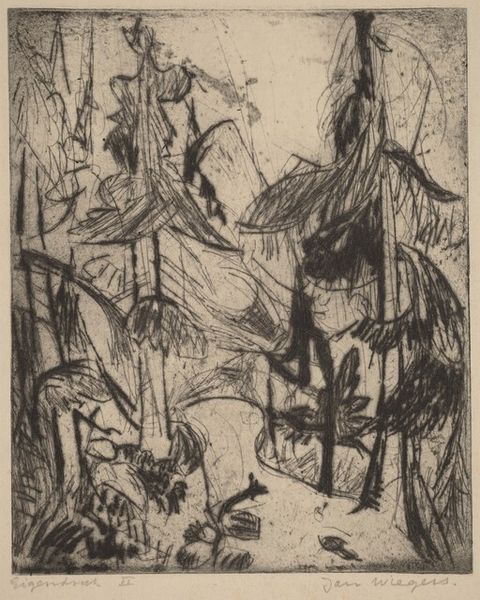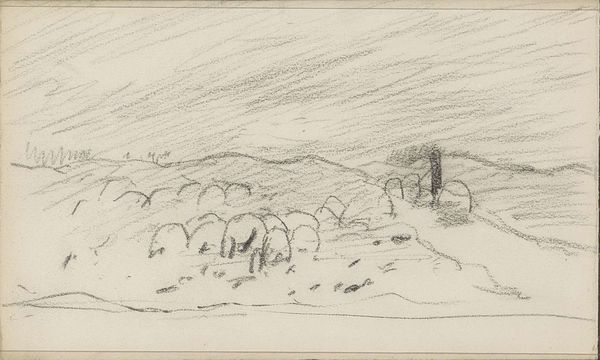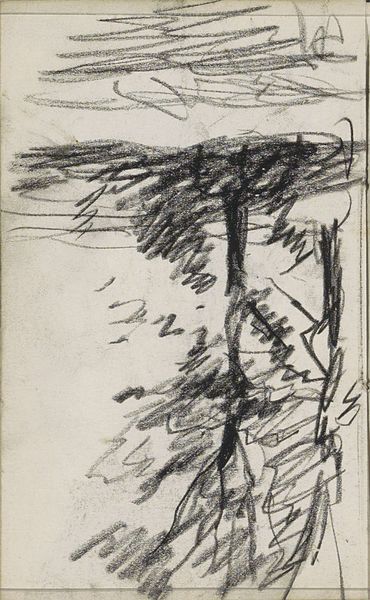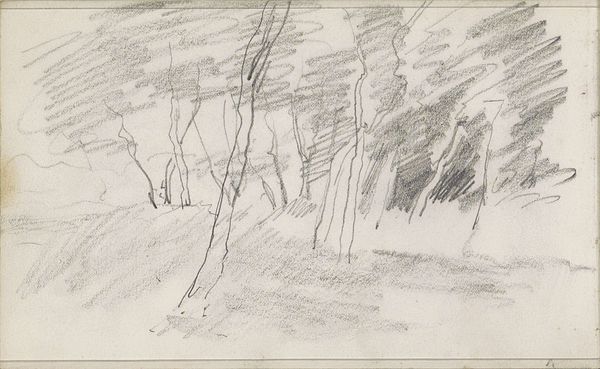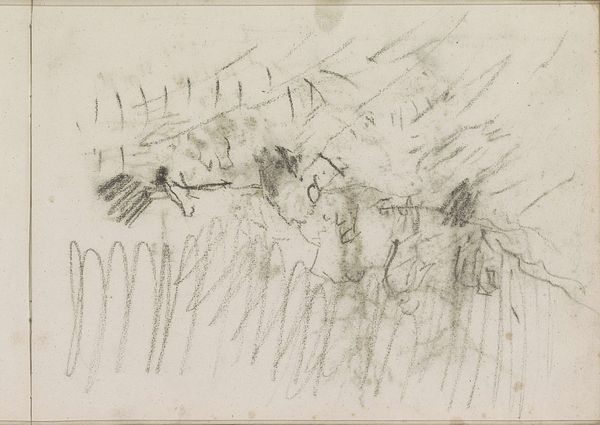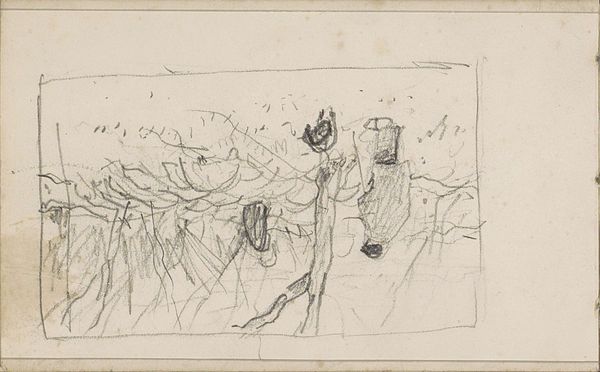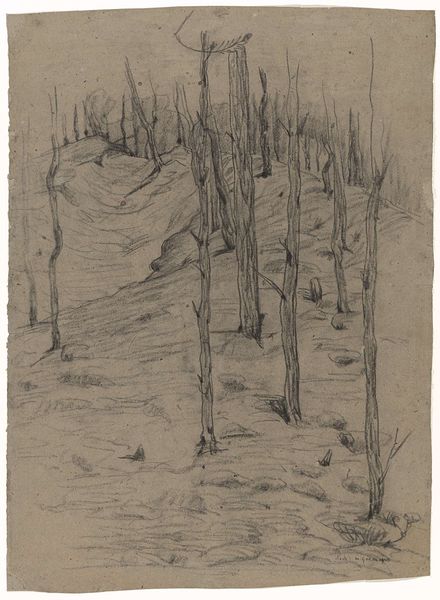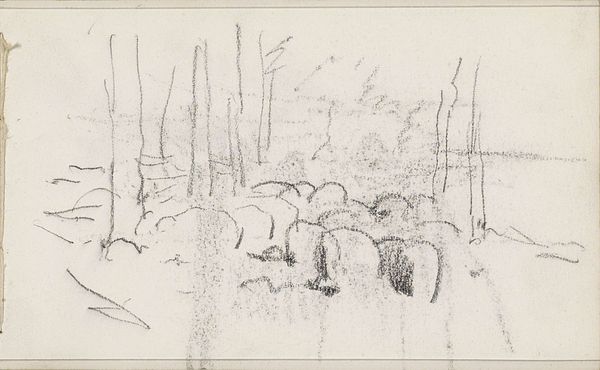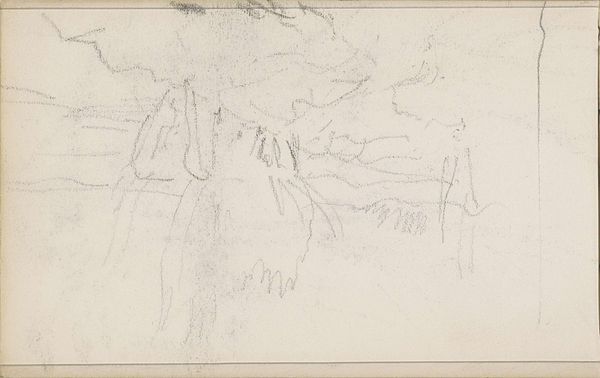
Dimensions: height 179 mm, width 112 mm
Copyright: Rijks Museum: Open Domain
Anton Mauve made this pencil drawing, 'Three Riders in a Forest,' in 1880s Netherlands. He was a leading artist in the Hague School, so the subject of this work places him in a broader artistic and social context. Mauve belonged to a group of artists who reacted against the urban and industrial landscape by focusing on rural scenes. The image seems to create meaning through its visual codes, cultural references, and historical associations. The choice of a forest setting and horse riders evokes a sense of tradition and the relationship between humans and nature. Mauve came to represent the Dutch landscape as a site of national identity and cultural heritage. The image subtly comments on the social structures of its time, as it presents an idealized view of rural life. To fully understand the meaning and significance of this drawing, we can delve into the social and institutional context of the Hague School. We need to explore their artistic manifestos, exhibition records, and critical reception.
Comments
No comments
Be the first to comment and join the conversation on the ultimate creative platform.
